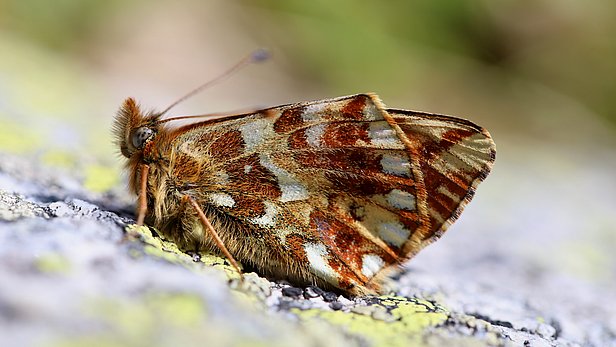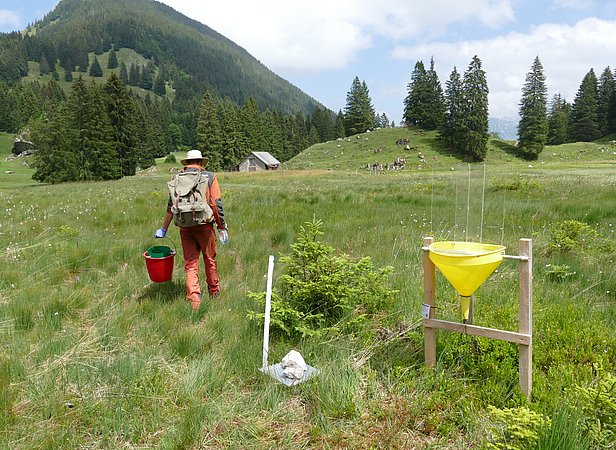INSECT – A research initiative on changes in the insect fauna in Switzerland
Lucia Villarroya-Villalba
Sindhura Stothra Bhashyam
Gregor Mühlematter
Martin Obrist
Martin Gossner
Marco Moretti
2022 - 2026
Cooperation FinancingStudies on long-term changes of the insect fauna in Switzerland are rare. WSL, Agroscope, FiBL, info fauna (CSCF) and the Swiss Ornithological Institute have therefore launched the joint project INSECT. We are investigating the effects of climate and land use change on the composition and abundance of insect communities in recent decades with the aim of drawing conclusions about the status of and changes in insect populations in Switzerland. In addition, we want to identify the most important threats and limiting factors and derive recommendations for fostering the insect fauna.

Analysis of existing data
In a first step, the existing knowledge of the partner institutions was pooled, databases and sample archives with historical and current data were opened and thus made accessible to modern statistical analyses.
In a second step, data on insects and spiders from ground traps collected by WSL and partner organisations over the past 45 years were used. Based on the 1.73 million individuals recorded, the development of insect abundance, diversity and biomass is reconstructed for different habitats and related to small-scale changes in land use.
In a third step, 1.5 million records from amateur researchers and experts, which were compiled by the organisation info fauna, were evaluated. For 215 butterfly, 103 grasshopper and 72 dragonfly species with different traits, changes in distribution were calculated between 1980 and 2020 for different regions and altitudinal zones in Switzerland. In addition, the influence of climate change and large-scale changes in land use were analysed..
Resampling of 42 study sites with the RBA method
To be able to provide evidence-based recommendation on local factors that prevent negative developments of insect populations or contribute to a positive development, former study sites of WSL and partner organisations will be repeatedly sampled from 2023 to 2025. Part of this is WSL's resampling campaign on the 42 sites of the national RBA (Rapid Biodiversity Assessment) project from 2000‒2007. The sites are distributed among forest, agricultural land, and unused habitats. In addition to data on insect diversity, abundance and biomass, environmental factors are also recorded. All with the aim of being able to quantify the changes in the composition of the insect communities, to identify the environmental drivers and to derive recommendations for the conservation of insects.

In parallel, the research institutes Agroscope, FiBL and the Swiss Ornithological Institute are repeating their insect studies carried out in the 1990s in the study regions of Combremont/Nuvilly, Rusholz/Buttisholz, Rafzerfeld and Leymental.
Podcast: How are insects doing in Switzerland? ¶
This podcast from FiBL is about the changes in insect diversity and communities in Switzerland. A new research initiative aims to identify the associated relationships, causes and consequences in order to improve insect conservation.
